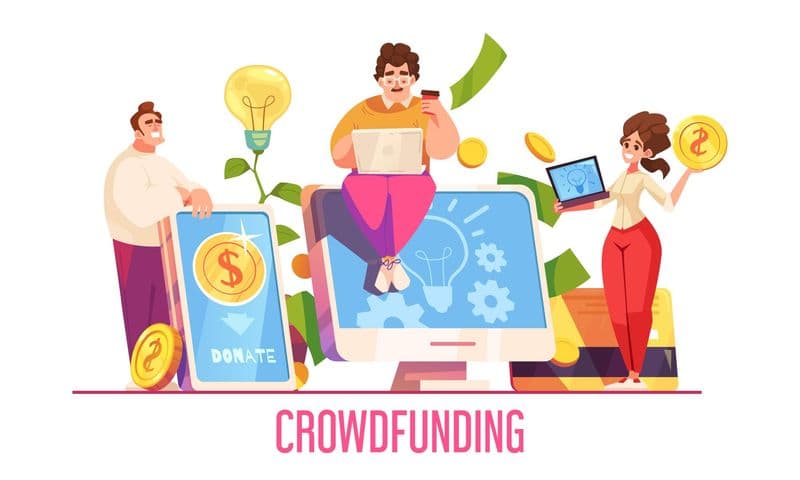In today's rapidly evolving software-as-a-service (SaaS) landscape, implementing effective sales strategies is crucial for success. As the SaaS market continues to expand, companies must adopt best practices to stand out from the competition and drive sustainable growth. This comprehensive guide explores the most effective SaaS sales best practices for 2025, providing actionable insights and examples to help your business thrive.
Understanding the SaaS Sales Landscape
The SaaS industry has experienced tremendous growth in recent years, with global SaaS revenue projected to reach $307 billion by 2026. This explosive growth has led to increased competition, making it essential for companies to refine their sales approaches. SaaS sales differ from traditional software sales in several key ways:
- Shorter sales cycles
- Emphasis on customer retention and recurring revenue
- Greater focus on product demonstrations and free trials
- Importance of customer success and ongoing support
Understanding these unique aspects of SaaS sales is crucial for implementing effective strategies and best practices.
Defining Your Ideal Customer Profile

One of the most critical SaaS sales best practices is clearly defining your ideal customer profile (ICP). This involves:
Analyzing your current customer base
Identifying common characteristics of your most successful clients
Creating detailed buyer personas
By developing a comprehensive ICP, you can focus your sales efforts on prospects most likely to benefit from your solution and become long-term customers. For example, Pipedrive, a CRM software company, achieved unicorn status in 2020 by focusing on a specific ICP: small to medium-sized sales teams looking for an intuitive, user-friendly CRM solution.
Implementing a Product-Led Growth Strategy

Product-led growth (PLG) has become increasingly popular among SaaS companies. This approach focuses on using the product itself as the primary driver of customer acquisition, retention, and expansion. Key elements of a successful PLG strategy include:
Offering a freemium model or free trial
Providing an intuitive, self-service onboarding experience
Incorporating viral loops to encourage user growth
Leveraging in-app messaging and guidance
Asana, the project management software company, has successfully implemented a PLG strategy by offering a robust free plan and personalized in-app onboarding experiences. This approach has helped Asana grow its user base to over 139,000 paying customers with over 3 million paid seats by the end of 2023.
Mastering the Art of Product Demonstrations

For SaaS companies, effective product demonstrations are crucial for converting leads into customers. Best practices for SaaS product demos include:
Tailoring the demo to address specific customer pain points
Focusing on value and outcomes rather than features
Encouraging interaction and questions throughout the demo
Using real-world examples and use cases
Gong, a revenue intelligence platform, has excelled in this area by developing a powerful SaaS platform that leverages AI and machine learning to analyze sales conversations. Their innovative solution gives sales teams unprecedented visibility into customer interactions, helping them close deals faster.
Leveraging Content Marketing and Thought Leadership

Content marketing plays a vital role in SaaS sales by educating prospects, building trust, and establishing thought leadership. Effective content marketing strategies for SaaS companies include:
Creating in-depth blog posts and whitepapers
Producing educational videos and webinars
Developing case studies and customer success stories
Engaging in social media and community building
HubSpot's comprehensive blog and educational resources demonstrate the power of content marketing in establishing thought leadership and driving organic growth.
Implementing a Multi-Touch Attribution Model
Understanding the customer journey and attributing conversions to specific touchpoints is crucial for optimizing your SaaS sales strategy. Implementing a multi-touch attribution model allows you to:
Identify the most effective marketing channels
Optimize your sales funnel
Allocate resources more efficiently
Improve ROI on marketing and sales efforts
By tracking and analyzing customer interactions across various touchpoints, you can make data-driven decisions to improve your sales process and increase conversions.
Focusing on Customer Success and Retention
In the SaaS model, customer retention is just as important as acquisition. Implementing a strong customer success program can significantly impact your bottom line. Best practices for customer success in SaaS include:
Providing comprehensive onboarding and training
Offering ongoing support and resources
Regularly seeking and acting on customer feedback
Implementing a customer health score system
Zappos, the online shoe retailer, is renowned for its exceptional customer service. Their focus on creating "wow" experiences for customers has led to high retention rates and strong organic growth through positive word-of-mouth.
Optimizing Your Pricing Strategy
Developing an effective pricing strategy is crucial for SaaS success. Best practices for SaaS pricing include:
Offering tiered pricing plans to cater to different customer segments
Implementing value-based pricing
Regularly reviewing and adjusting pricing based on market conditions and customer feedback
Considering freemium models to drive adoption
Salesforce, a leading CRM platform, has successfully implemented a tiered pricing strategy that caters to businesses of all sizes, from small startups to large enterprises.
Leveraging AI and Automation in Sales Processes

Artificial intelligence and automation are revolutionizing SaaS sales. Implementing these technologies can help streamline your sales process and improve efficiency. Best practices for leveraging AI in SaaS sales include:
Using AI-powered lead scoring and prioritization
Implementing chatbots for initial customer interactions
Utilizing predictive analytics for sales forecasting
Automating repetitive tasks to free up sales reps' time
Gong's AI-powered platform, which analyzes sales conversations to provide actionable insights, is an excellent example of how AI can be leveraged to improve sales effectiveness.
Building a Strong Sales Team Culture
Creating a positive and motivating sales team culture is essential for long-term success in SaaS sales. Best practices for building a strong sales culture include:
Providing ongoing training and development opportunities
Implementing a transparent and fair compensation structure
Encouraging collaboration and knowledge sharing
Recognizing and rewarding top performers
Salesforce is known for its strong company culture, which has contributed to its consistent growth and success in the SaaS industry.
In conclusion, implementing these SaaS sales best practices can help your company stand out in a competitive market and drive sustainable growth. By focusing on defining your ideal customer profile, leveraging product-led growth strategies, mastering product demonstrations, and prioritizing customer success, you can create a robust sales process that delivers results. Remember to continuously analyze and optimize your approach based on data and customer feedback to stay ahead in the ever-evolving SaaS landscape.
FAQ
Q1: What is the average sales cycle length for SaaS products?
A: The sales cycle length for SaaS products can vary widely depending on factors such as product complexity, price point, and target market. However, on average, SaaS sales cycles range from 3 to 6 months for small to medium-sized businesses and 6 to 18 months for enterprise deals.
Q2: How important is customer retention in SaaS sales?
A: Customer retention is crucial in SaaS sales, as it directly impacts recurring revenue and overall business growth. Studies show that increasing customer retention rates by just 5% can increase profits by 25% to 95%.
Q3: What are some effective strategies for reducing churn in SaaS?
A: Effective strategies for reducing churn include providing excellent customer support, regularly seeking and acting on customer feedback, offering ongoing training and resources, and implementing a customer health score system to identify at-risk accounts.


